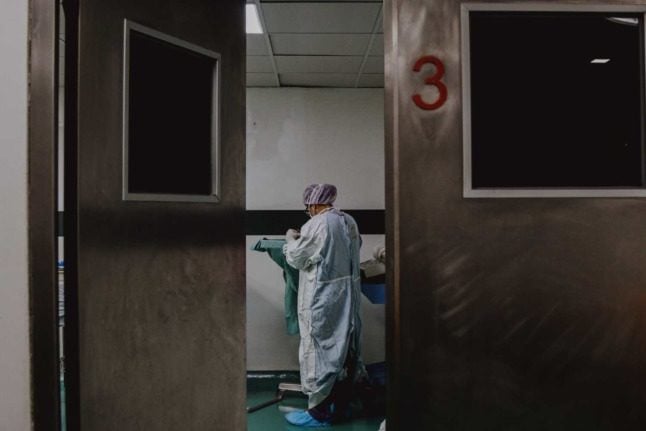After many cases of hepatitis with unclear origin were reported in several European countries, Austria has its first suspected cases.
Two children affected were hospitalised in Vienna on Monday.
They are not in critical condition, Austrian media reported, citing Ministry of Health information.
The reports could be connected to a string of “mysterious hepatitis” cases that the World Health Organisation has reported as being detected in several countries.
The first cases of severe acute hepatitis with unknown cause were reported earlier this month across central Scotland, WHO said.
After that, dozens of patients were identified in the United Kingdom, all young children. There are now reports of confirmed cases in 11 countries as of April 21st.
READ ALSO: Austria: What you need to know about the Ferrero product recall
However, the World Health Organisation warns that it is not clear if there has been an increase in hepatitis cases or an increase in awareness after the first reports.
The children present acute hepatitis, which means they have liver inflammation. The cases are aged one month to 16 years old, and seventeen children (approximately 10 per cent) have needed liver transplantation – at least one death was reported, according to the WHO.
What is hepatitis?
According to the NHS, hepatitis is the term used to describe inflammation of the liver – it is usually the result of a viral infection, liver damage caused by drinking alcohol, or rare autoimmune hepatitis, when the immune system attacks and damages the liver.
There are several types of hepatitis. The viral infection is mainly transmitted by contaminated food and drink or contact with infected blood.
Austria’s health authorities mention many other causes of liver inflammation, including disorders of blood flow in the liver and non-alcoholic fatty liver hepatitis (NASH).
So which type has been affecting the children?
These infections have been called “mysterious” because none of the five types of known viruses that cause hepatitis was found in the children.
Health authorities are still investigating the cause of the liver issues, mainly since no other epidemiological risk factors, including recent international travel, have been found in the children.
In 74 of the 169 cases, laboratory tests have detected adenovirus, which is a common virus that causes cold-like symptoms. But, according to WHO, the new coronavirus has also been identified in 20 cases of those that were tested. And 19 of the children had a co-infection of both.
READ ALSO: How the Austrian healthcare system works
However, the organisation states that further investigations are ongoing and that it is not possible to draw a conclusion at this moment. The presence of the adenovirus is one hypothesis for the underlying cause of the disease, but “it does not fully explain the severity of the clinical picture, according to the health authority.
This virus is a common pathogen and usually causes limited infections, such as conjunctivitis, bladder infection, and the stomach flu. It is not known to be a cause of hepatitis in otherwise healthy children.
READ ALSO: What is Austria’s e-card? Everything you need to know
Could it be caused by the coronavirus vaccine?
The World Health Organisation is clear on this, saying that hypotheses related to the side effects from the Covid-19 are not supported as the vast majority of the affected children didn’t receive the vaccination.
In Italy, where 11 cases have been confirmed, the health authorities report that not a single one of the sick children had been vaccinated against Covid-19, broadcaster ORF said.
WHO does consider that increased susceptibility among young children following a lower level of circulation of adenovirus during the Covid pandemic could be a factor. Another hypothesis is the potential emergence of a new adenovirus or consequences of the co-infection with Covid.
What should I do if I have symptoms?
The WHO recommends that people take the standard prevention measures for adenovirus and other common infections, which include regular hand washing and respiratory hygiene.
READ ALSO: EXPLAINED: What is Austria’s ‘tick vaccine’ and should you take it?
There are no recommended restrictions on travel or trade with the United Kingdom, where most cases have been registered, or any other country where cases are identified, the organisation said.
The NHS tells parents that if their child has symptoms of hepatitis, including yellowing of the eyes and skin (jaundice), they should be taken to their doctor.
“Good hygiene, including supervising hand washing in young children, can help prevent infections that can cause hepatitis.” the UK health authority added.



 Please whitelist us to continue reading.
Please whitelist us to continue reading.
Member comments